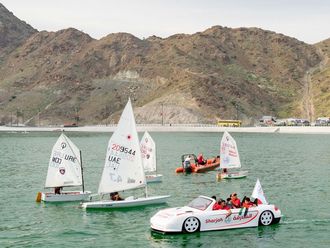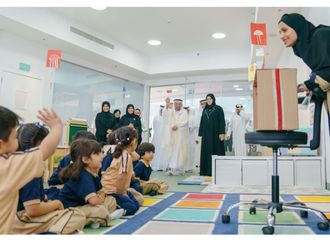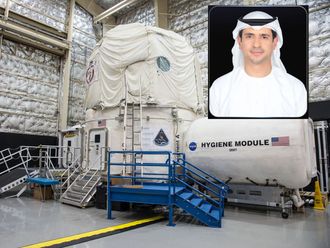The fact that workers are not allowed to work should the temperature top 50 degrees Celsius is known as a fact of life to every member of the public.
In fact, they argue, the law states that should the temperature exceed 50°C, they will have to declare a public holiday. And that is why the mercury never touches 50°C - at least officially, they add.
But there is only one small thing wrong with this fact: there is no such law, officials clarify. Certainly, the UAE Labour Law contains no mention of temperature.
There are, in fact, other small things wrong as well, add weather forecasters. For instance, the mercury has never really touched even 48°C, at least for the last 20 years, in Dubai City.
And chances are, they add, the cities of the UAE along the coastal belt, particularly in Dubai and the Northern Emirates, have never in recent memory experienced 50°C either.
Ministry of Labour officials clarified last week there is no specific mention of any 50-degree requirement in the UAE Labour Law, indicating this is a misconception among the public.
They, however, explained provisions set out by the International Labour Organisation regarding this have been embodied in the regulations through the by-laws.
"It really is up to the construction companies employing workers, for instance, to take care of their staff," they added.
A legal expert specialising in labour laws throughout the Gulf meanwhile sought to set the record straight: "The UAE is not unique in not specifically mentioning anything about a 50°C stop-work requirement, since as far as I know no country in the Gulf - or for that matter the world - has any such requirement.
"But Gulf states do recognise the ILO regulations, and the UAE Labour Law also embodies the ILO international standards in its by-laws dealing with job categorisation of different workers."
Having earlier worked in Saudi Arabia in a similar capacity, the legal consultant cited the practice followed in the kingdom.
"The Saudi Ministry of Labour has different rules for workers engaged in different job categories, and those working in the desert in mining companies (which includes petroleum producers, both offshore and onshore) have a different set of rules dictated to by the kind of work conditions they are likely to experience."
He said all Gulf states follow such norms.
Construction companies in the UAE further clarified they follow all the Labour Law requirements, including, among other things, the general provisions regarding work conditions. These include ILO international standards, they said.
The law here stipulates employers should provide a safe work environment for employees, and that workers should not work for more than five hours continuously, with a break mandated after working for a certain number of hours.
They also pointed out that nowhere is anything about 50°C specifically mentioned.
There is no call for any such mention either, long-time weather forecasters at Dubai International Airport meanwhile indicated, since the mercury has never touched this level.
"The maximum the temperature has reached in the last 20 years has been 47.8°C," they explained. "In fact, it has touched or exceeded 47° only thrice during this period."
Asked, however, about members of the public reporting temperatures often exceeding 50 degrees Celsius, as indicated by sensors in their cars or elsewhere, they said it was "perfectly believable", but said the measurement of temperature needs to be done at certain constant parameters to give consistent readings worldwide.
"The weatherman is really checking the temperature of the air, and for this we have to measure it at least 1.1 metres from any solid - since metal or concrete surfaces may distort the reading - and look for free flow of air, as in the open.
"It is temperature taken in this manner that is reported by weather forecasters the world over."
They, however, pointed out the temperature does not give the entire picture about weather conditions: "For this, we should also take into account the relative humidity and wind speed factors, in addition to the ambient temperature."
They explained this was why the Comfort Index had been formulated. This runs from a scale of one to 10, with one being very comfortable, and 10 acutely uncomfortable.
No law on heat-linked work stoppage
The fact that workers are not allowed to work should the temperature top 50 degrees Celsius is known as a fact of life to every member of the public.












